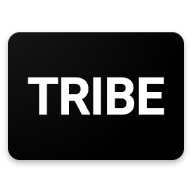lstr
A fast, minimalist directory tree viewer, written in Rust. Inspired by the command line program tree, with a powerful interactive mode.
An interactive overview of a project’s structure using lstr.
Philosophy
Minimalist: Provides essential features without the bloat. The core experience is clean and uncluttered.
Interactive: An optional TUI mode for fluid, keyboard-driven exploration.
Features
Classic and interactive modes: Use lstr for a classic tree-like view, or launch lstr interactive for a fully interactive TUI.
Theme-aware coloring: Respects your system’s LS_COLORS environment variable for fully customizable file and directory colors.
Rich information display (optional):
Display file-specific icons with –icons (requires a Nerd Font).
Show file permissions with -p.
Show file sizes with -s.
Git Integration: Show file statuses (Modified, New, Untracked, etc.) directly in the tree with the -G flag.
Smart filtering:
Respects your .gitignore files with the -g flag.
Control recursion depth (-L) or show only directories (-d).
Installation
With Homebrew (macOS)
The easiest way to install lstr on macOS is with Homebrew.
# First, tap our repository
brew tap bgreenwell/lstr
# Now, install lstr
brew install lstr
From source (all platforms)
You need the Rust toolchain installed on your system to build lstr.
Clone the repository:
git clone [https://github.com/bgreenwell/lstr.git](https://github.com/bgreenwell/lstr.git)
cd lstr
Build and install using Cargo:
Usage
lstr [OPTIONS] [PATH]
lstr interactive [OPTIONS] [PATH]
Note that PATH defaults to the current directory (.) if not specified.
Option
Description
-a, –all
List all files and directories, including hidden ones.
–color
Specify when to use color output (always, auto, never).
-d, –dirs-only
List directories only, ignoring all files.
-g, –gitignore
Respect .gitignore and other standard ignore files.
-G, –git-status
Show git status for files and directories.
–icons
Display file-specific icons; requires a Nerd Font.
–hyperlinks
Render file paths as clickable hyperlinks (classic mode only)
-L, –level
Maximum depth to descend.
-p, –permissions
Display file permissions (Unix-like systems only).
-s, –size
Display the size of files.
–expand-level
Interactive mode only: Initial depth to expand the interactive tree.
Interactive mode
Launch the TUI with lstr interactive [OPTIONS] [PATH].
Keyboard controls
Key(s)
Action
↑ / k
Move selection up.
↓ / j
Move selection down.
Enter
Context-aware action:
– If on a file: Open it in the default editor ($EDITOR).
– If on a directory: Toggle expand/collapse.
q / Esc
Quit the application normally.
Ctrl+s
Shell integration: Quits and prints the selected path to stdout.
Examples
1. List the contents of the current directory
2. Explore a project interactively, ignoring gitignored files
lstr interactive -g –icons
3. Display a directory with file sizes and permissions (classic view)
4. See the git status of all files in a project
5. Get a tree with clickable file links (in a supported terminal)
6. Start an interactive session with all data displayed
lstr interactive -gG –icons -s -p
Piping and shell interaction
The classic view mode is designed to work well with other command-line tools via pipes (|).
Interactive fuzzy finding with fzf
This is a powerful way to instantly find any file in a large project.
fzf will take the tree from lstr and provide an interactive search prompt to filter it.
Paging large trees with less or bat
If a directory is too large to fit on one screen, pipe the output to a pager.
# Using less (the -R flag preserves color)
lstr -L 10 | less -R
# Using bat (a modern pager that understands colors)
lstr –icons | bat
Changing directories with lstr
You can use lstr as a visual cd command. Add the following function to your shell’s startup file (e.g., ~/.bashrc, ~/.zshrc):
# A function to visually change directories with lstr
lcd() {
# Run lstr and capture the selected path into a variable.
# The TUI will draw on stderr, and the final path will be on stdout.
local selected_dir
selected_dir=”$(lstr interactive -g –icons)”
# If the user selected a path (and didn’t just quit), `cd` into it.
# Check if the selection is a directory.
if [[ -n “$selected_dir” && -d “$selected_dir” ]]; then
cd “$selected_dir”
fi
}
After adding this and starting a new shell session (or running source ~/.bashrc), you can simply run:
This will launch the lstr interactive UI. Navigate to the directory you want, press Ctrl+s, and your shell’s current directory will instantly change.
Color customization
lstr respects your terminal’s color theme by default. It reads the LS_COLORS environment variable to colorize files and directories according to your system’s configuration. This is the same variable used by GNU ls and other modern command-line tools.
Linux
On most Linux distributions, this variable is already set. You can customize it by modifying your shell’s startup file.
macOS
macOS does not set the LS_COLORS variable by default. To enable this feature, you can install coreutils:
Then, add the following line to your shell’s startup file (e.g., ~/.zshrc or ~/.bash_profile):
# Use gdircolors from the newly installed coreutils
eval “$(gdircolors)”
Windows
Windows does not use the LS_COLORS variable natively, but you can set it manually to enable color support in modern terminals like Windows Terminal.
First, copy a standard LS_COLORS string, such as this one:
rs=0:di=01;34:ln=01;36:ex=01;32:*.zip=01;31:*.png=01;35:. This string defines colors for various file types:
Directories: Displayed in bold blue.
Executable files: Displayed in bold green (e.g., .sh scripts).
Symbolic links: Displayed in bold cyan.
Archives: Displayed in bold red (e.g., .zip, .tar.gz).
Image files: Displayed in bold magenta (e.g., .png, .jpg).
Other files: Displayed in the terminal’s default text color.
To set it for your current PowerShell session, run:
$env:LS_COLORS=”rs=0:di=01;34:ln=01;36:ex=01;32:*.zip=01;31:*.png=01;35:”
To set it for your current Command Prompt (cmd) session, run:
set LS_COLORS=rs=0:di=01;34:ln=01;36:ex=01;32:*.zip=01;31:*.png=01;35:
To make the setting permanent, you can add the command to your PowerShell profile or set it in the system’s “Environment Variables” dialog.
After setting the variable and starting a new shell session, lstr will automatically display your configured colors.
Inspiration
The philosophy and functionality of lstr are heavily inspired by the excellent C-based tree command line program. This project is an attempt to recreate that classic utility in modern, safe Rust.
License
This project is licensed under the terms of the MIT License.












